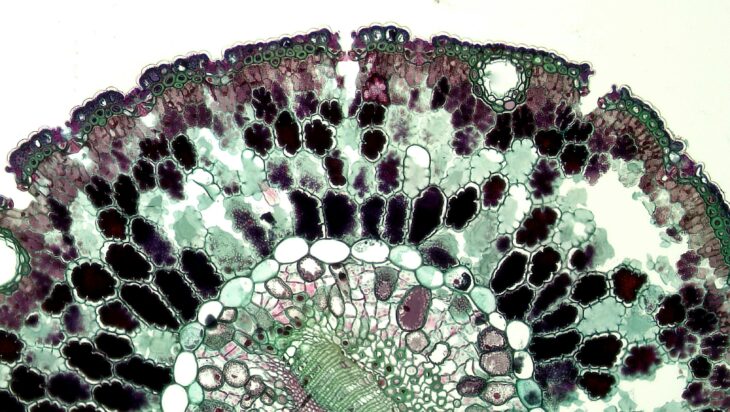There’s one thing plants and humans have in common – both are made up of single cells containing a nucleus that perform specialized functions to benefit the organism as a whole. When life first started, as early as 4 billion years ago, it consisted of simple cells that lacked a nucleus, referred to as prokaryotes. It was not until at least 2 billion years later that a major change in evolution gave rise to the first cells with a nucleus, called eukaryotes. Algae and fungi are eukaryotes, as are plants, animals, and some single-celled organisms.
Genomic studies show that all eukaryotes evolved from the same ancestor, called the Last Eukaryotic Common Ancestor or LECA. But these studies can provide only limited information about the characteristics of the LECA, so researchers know very little about its abundance, the way it looked, or where it lived. Scientists want to understand the origins of the LECA on Earth to determine how complex organisms arose on our planet, and how they could potentially arise on others.
A team of researchers from the Australian National University, the University of Bremen, and the Institut de Chimie de Strasbourg tried to track down the oldest evidence of eukaryotes in rocks to see when they diverged from prokaryotes. They argued that only eukaryotes contain certain molecules that regulate the structure and function of their cell membranes, called sterols. So to find the oldest signatures of eukaryotes, they went looking for these molecules in sediments that accumulated under the oceans, where many researchers think early eukaryotes evolved.
When a cell dies, it sinks to the seafloor where it fully or partially breaks down over time and is buried in ocean sediments. When these sediments harden into sedimentary rocks, whatever is left of the cell gets trapped in them. These researchers argued that sterols and the molecules derived from them also called their degradation products, remain in sediments for several millions of years after a cell dies. So they reasoned that the abundance of these molecules in sedimentary rocks should correspond to how many eukaryotes lived in the oceans when the sediments formed.
To determine what sterols turn into when they degrade, the researchers burned different amounts of the sterols found in modern eukaryotes. They analyzed the degradation products using a technique that identifies organic molecules known as gas chromatography. They compared the sterol degradation products from modern eukaryotes with organic molecules they measured in a rock sample from the Barney Creek Formation in Northern Australia, containing oil from around 1.7 billion years ago. Their goal was to test whether the rock sample contained the same molecules as the burned sterols, which would confirm the presence of eukaryotes in the oceans at that time.
They found that the rock sample contained only a fraction of the molecules they measured in the burned sterols. The molecules in the rock were associated with stabilizing eukaryote cell membranes against environmental stresses like high temperatures and high salt concentrations. The researchers explained that sterols help some modern eukaryotes survive extreme conditions like these by attaching themselves to the cell membrane, making it stronger and more flexible, which helps to avoid cell rupture triggered by external stress.
The researchers proposed that the rock sample preserved the remains of early eukaryotic organisms that produced these membrane-strengthening sterols so they could survive in extreme conditions. They couldn’t say whether eukaryotes developed sterols before or after they developed a nucleus. But they suggested that sterols would have conferred a clear ecological advantage in helping early eukaryotes adapt to extreme environmental stresses, which could have encouraged more specialized forms of life to evolve.
The team suggested that changing atmospheric conditions could also have triggered the formation and adaptation of eukaryotes. They explained that oxygen first built up in the atmosphere around 2.3 billion years ago, representing a chemical stress in the environment that was lethal to early cells that were allergic to oxygen. However, the sterols present in the early eukaryotic cell membranes could have helped them adapt to the changing atmosphere and develop their preference for more oxygenated environments.
The researchers concluded that ecological stresses have the potential to transform cells at a fundamental level, and that specific compounds unique to eukaryotes can be used to find them in ancient rock samples. In the future, the scientists plan on analyzing other rock samples from Northern Australia to test their results and to look for other types of molecules that could inform us about the LECA.


